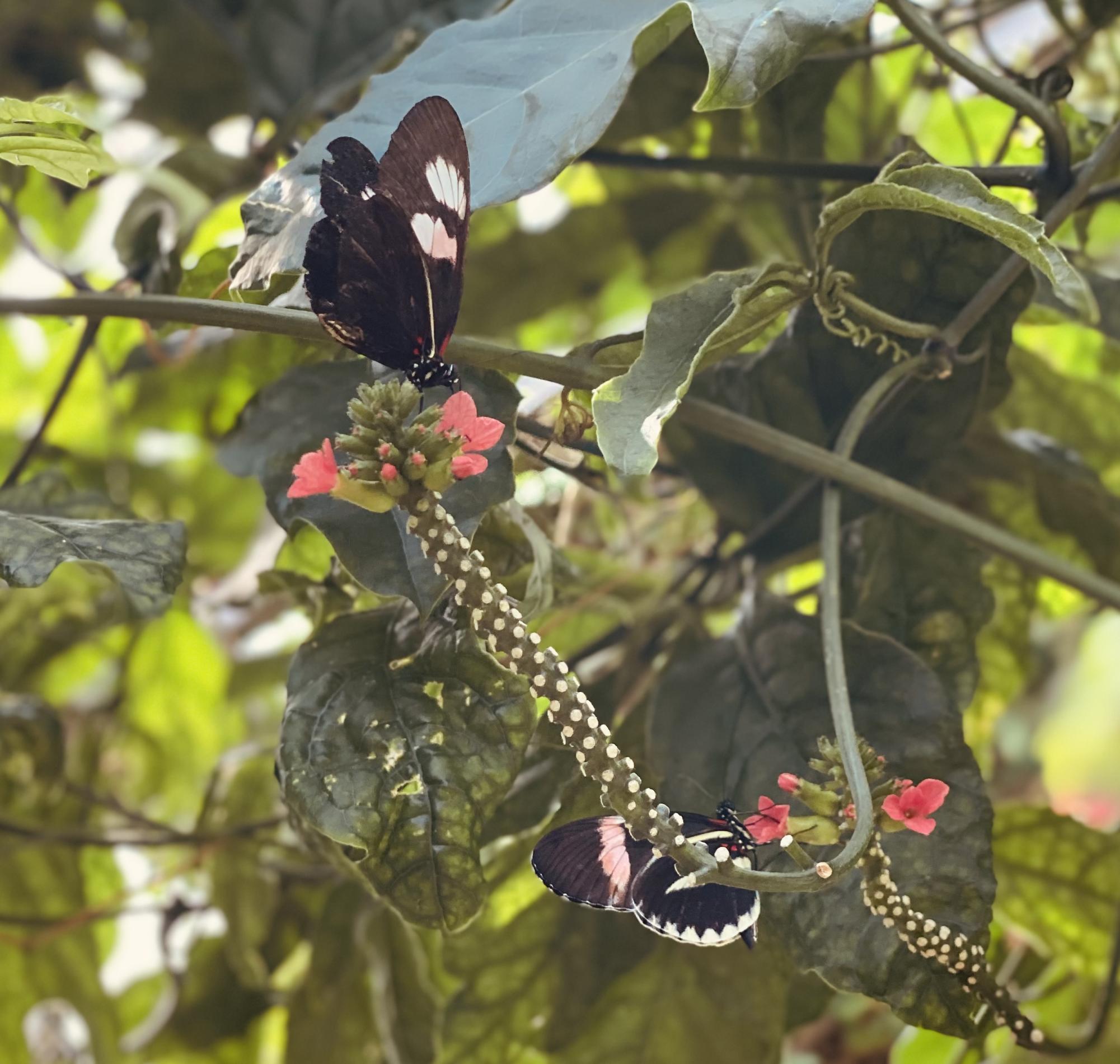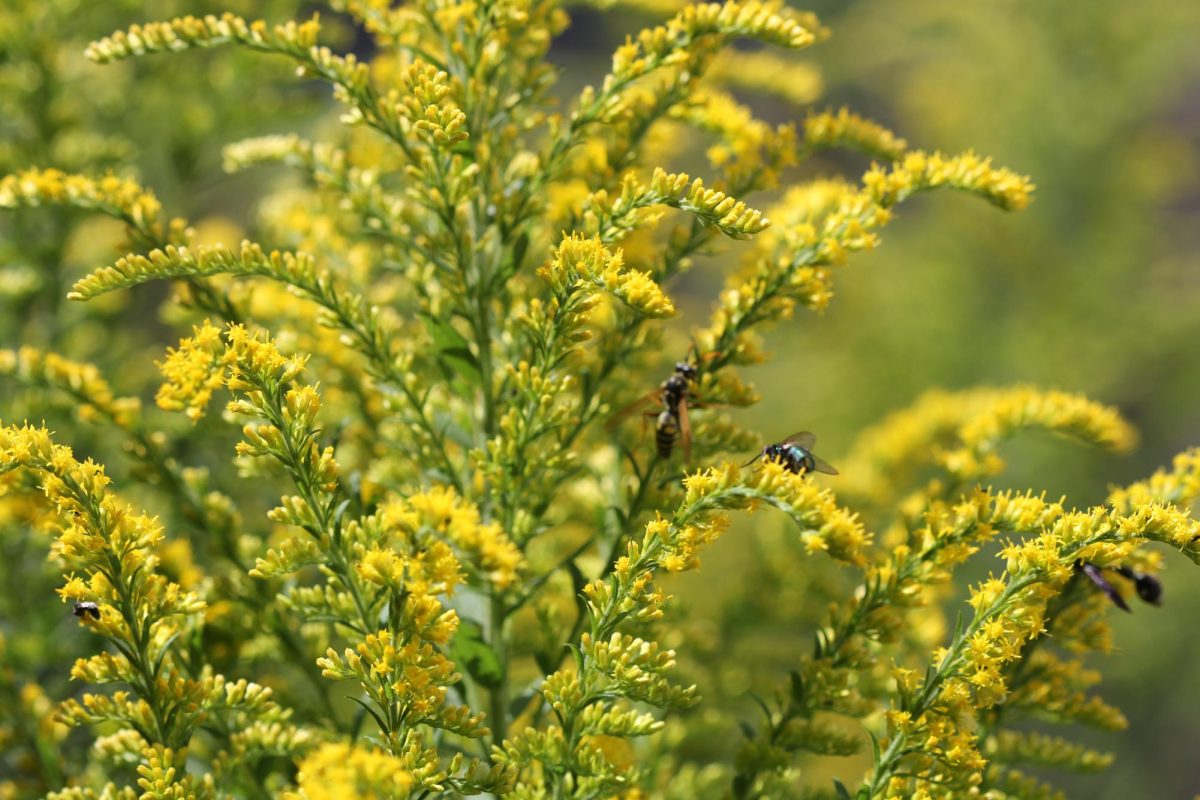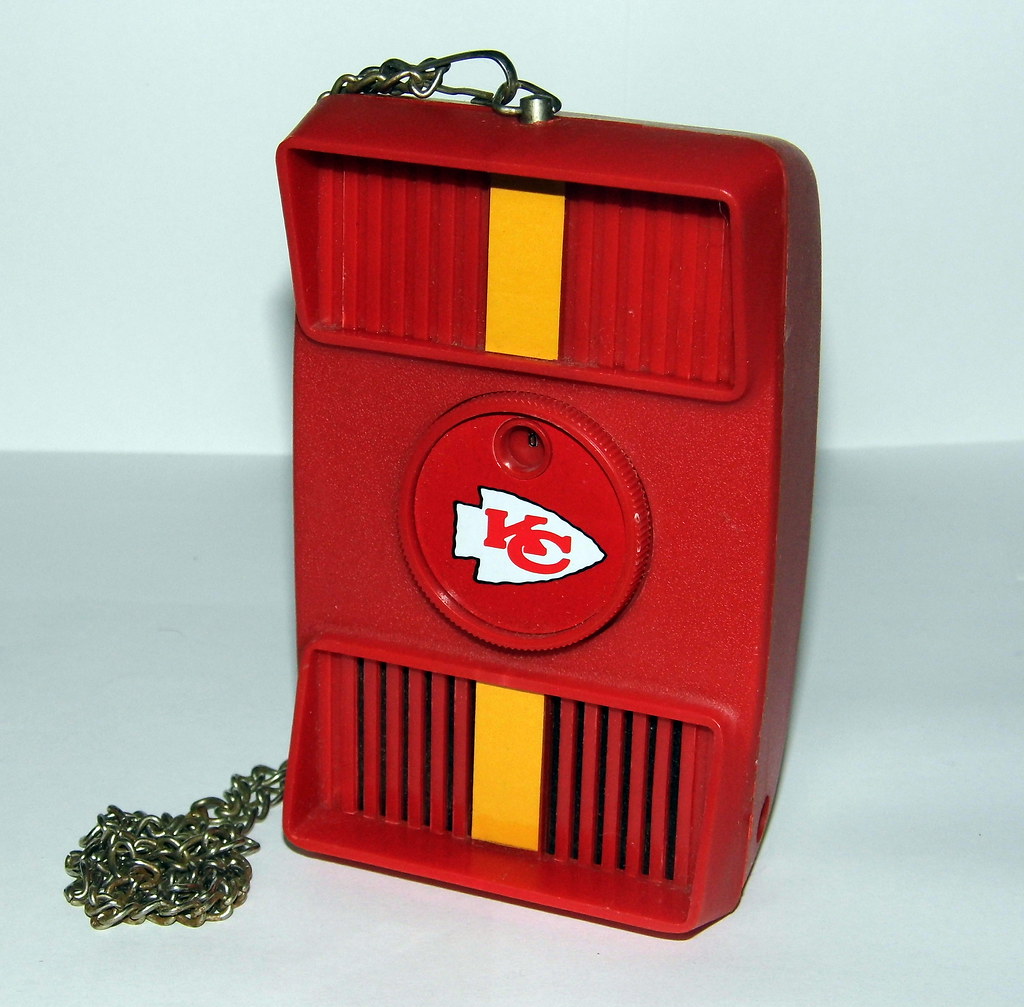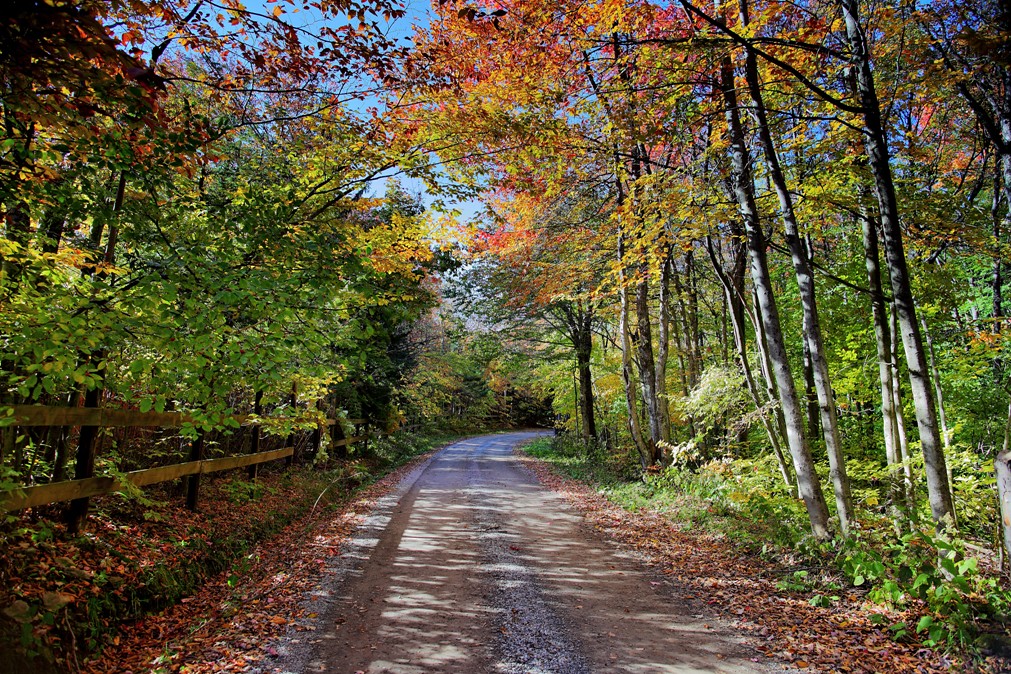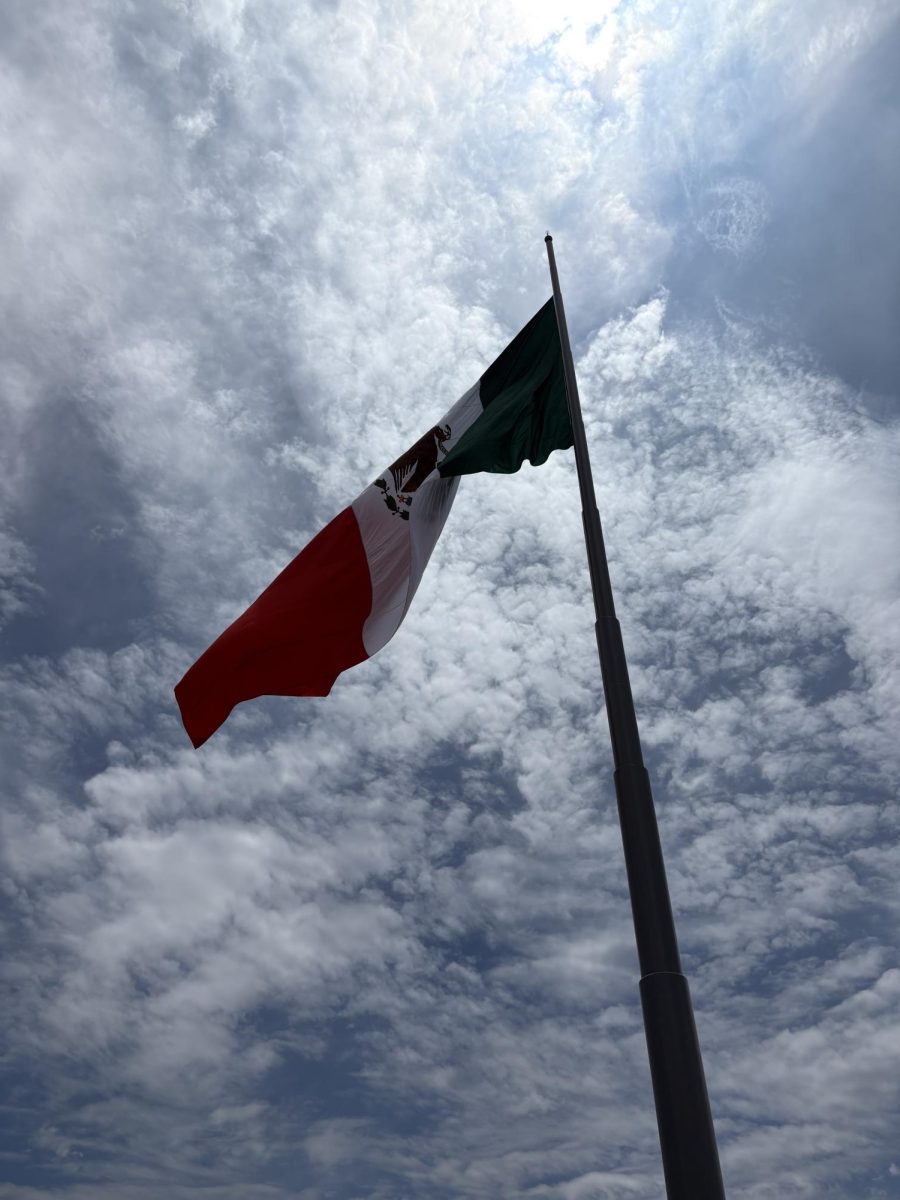As the warmer months come to a close, we say a brief goodbye to some of our favorite winged species and pollinators who have been flitting around our gardens for the past six months, or some—like monarchs—who have just been passing through on their annual migratory route through Nebraska. In the insect world, few species are as beloved as butterflies, who remain mysterious—what’s up with the caterpillars and cocoons?—no matter how much we study and admire them.
There are 17,500 different species of butterflies globally which makes it possible for these plant pollinators to produce new seeds for vegetables, fruits, and flowers. Chances are, you’ve seen these beautiful insects fluttering around your backyard; some even call them “flying flowers” due to their vibrant shades. The most common butterflies around the globe are monarchs, cabbage whites, orange sulfurs, painted ladies, and Eastern tiger swallowtails. The wing colors of these flying flowers depend on two things: pigment and structure. Pigments are color molecules and chemical compositions caused by the diet of the butterfly. The patterns and structure of the butterfly are caused by tiny scales. When you put these two together, you get a beautiful image and pattern formed by thousands of pixels. Although the wings of butterflies are clear, the tiny scales reflect giving it a solid appearance.
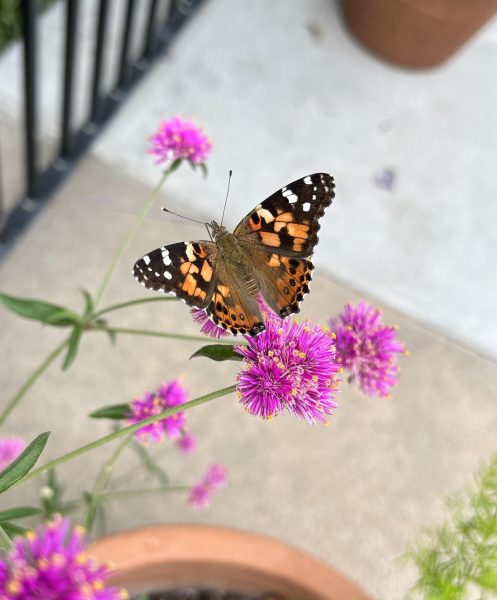 The photo on the left depicts an American Lady butterfly consuming pollen through its proboscis. The proboscis is a part of the butterfly that remains tightly coiled between their two galea or antennas. Butterflies use their proboscis to extract nectar from flowers which leads to more plant colonization and a wider production of new seeds. If you examine the photo closely, you can see this monarch butterfly’s proboscis rolled out in between their two galeae (antennas) meaning it is extracting nectar from the flower. Considering the fact that the proboscis is a part of the butterfly that extracts pollen, you would think that butterflies taste there too, however, that’s not the case. Butterflies have chemical sensors on their feet which enable them to taste the nectar that they are feeding on. The sensory organelles are scattered across their legs; their taste buds are similar to ours except butterflies are about 200x stronger.
The photo on the left depicts an American Lady butterfly consuming pollen through its proboscis. The proboscis is a part of the butterfly that remains tightly coiled between their two galea or antennas. Butterflies use their proboscis to extract nectar from flowers which leads to more plant colonization and a wider production of new seeds. If you examine the photo closely, you can see this monarch butterfly’s proboscis rolled out in between their two galeae (antennas) meaning it is extracting nectar from the flower. Considering the fact that the proboscis is a part of the butterfly that extracts pollen, you would think that butterflies taste there too, however, that’s not the case. Butterflies have chemical sensors on their feet which enable them to taste the nectar that they are feeding on. The sensory organelles are scattered across their legs; their taste buds are similar to ours except butterflies are about 200x stronger.
Although the life expectancy for butterflies remains at about 40 days, it does not make them any less important. Butterflies not only spread the seeds of crucial plants and vegetables but are a member of the food chain; whether being the prey or predator. Without the butterfly, pest control would rise, and our population of flowers would crumble which would leave the food chain out of balance. Butterflies act as an environmental indicator meaning if there are lots of butterflies in your yard, you have a healthy environment and ecosystem. Next time you see a butterfly in your yard, keep in mind that you have a healthy and verdant environment due to their hard work.
Bonus: An invertebrate photo essay from the MS Photojournalism Class!
Middle School Photojournalism students are:
Tess Chen
Aqib Imran
Juliet Low
Natalie Low
Audrey Malpert
Charles Menin
Cate Miller-Petznick
Jasmine Nlam
Jacob Ryan
Ronan Schlueter
Maggie Stamp
Reese Strunk
Leilani Thomas
Cybela Vargas
Maddie Wallace

